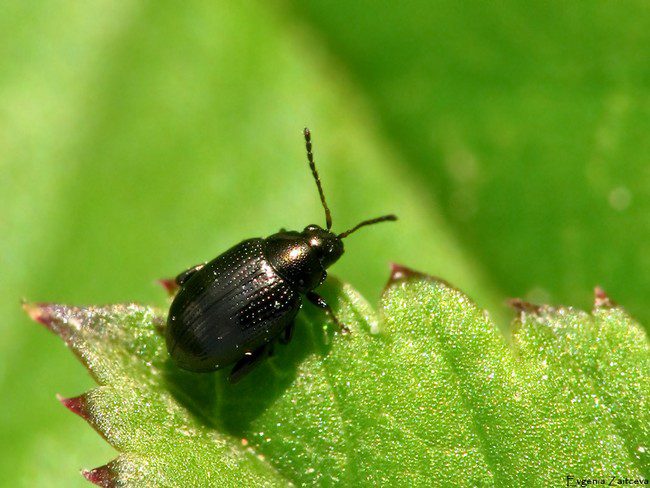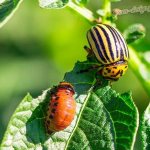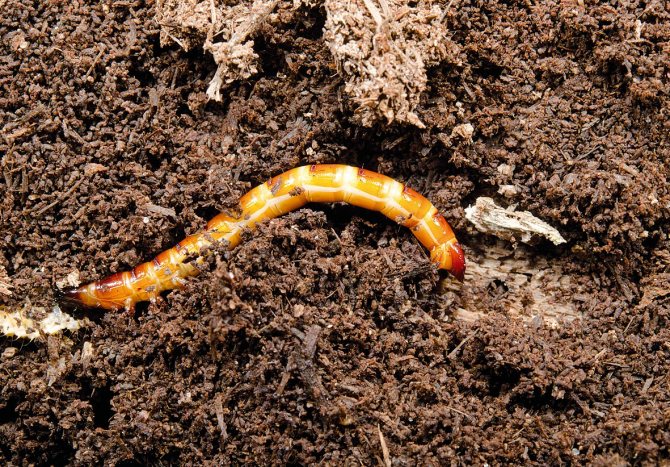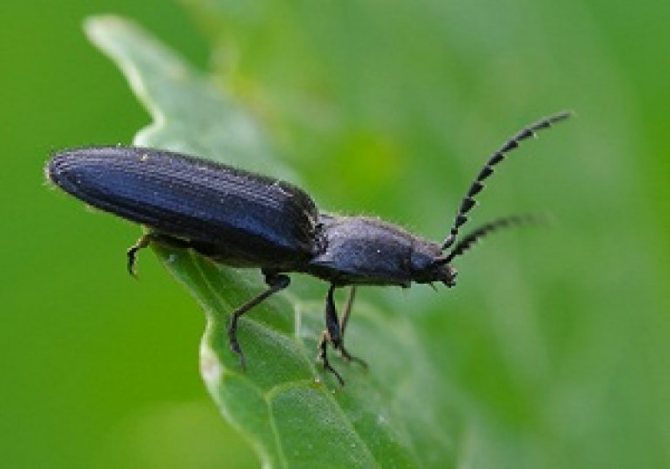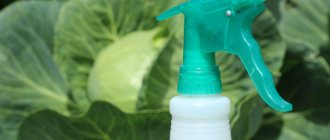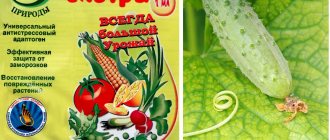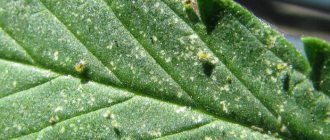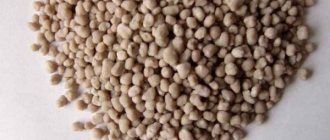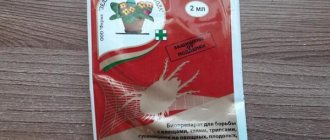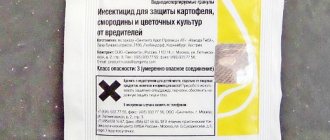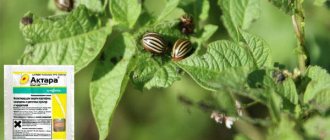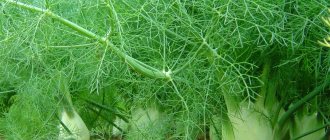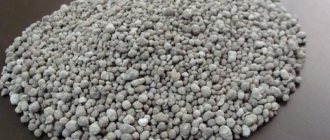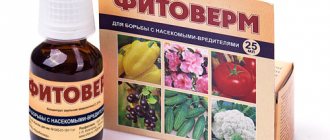Types of beetles - plant pests
The most dangerous beetles, pests of plants in the garden and vegetable garden, are those that feed on buds, fruits, shoots and leaves. Representatives of the Leaf beetle family are considered the most dangerous category. There are a large number of such parasites, but we have compiled a selection of commonly encountered representatives.
Beetles - leaf beetles
Leaf beetles (Chrysomelidae) are considered the largest family of parasites. They feed on one or more plants and are also found on the soil. The development of larvae occurs, as a rule, in the ground. Having settled on the site, without timely control measures, leaf beetles can damage all crops that develop on the territory.
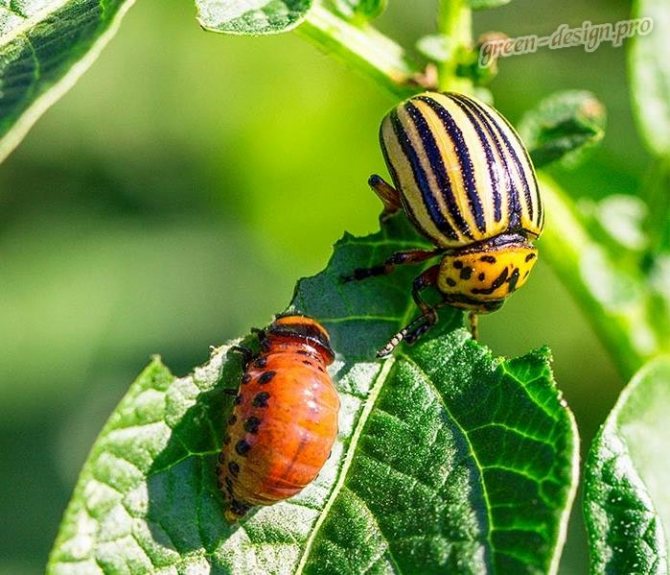
Colorado potato beetle is a prominent representative of the leaf beetle (Chrysomelidae)
The most famous member of the family is the Colorado potato beetle - a pest of potatoes, tomatoes and eggplants. For the fight, a mechanical method is used - the collection and destruction of parasites. But this method is only suitable if the area is small or not severely damaged. On huge areas, it is better to resort to processing plantings with drugs of systemic action - "Corado", "Zubr", "Tanrek", "Commander".
Beetles - weevils
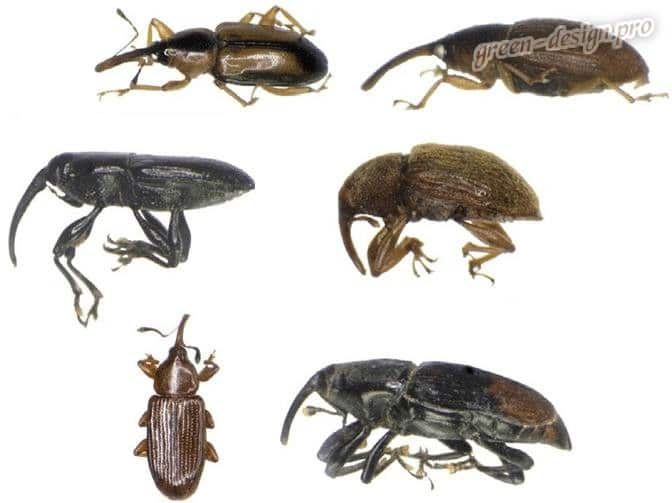

Weevils (Curculionidae)
Weevils (Curculionidae) are called dangerous pests that can destroy both flower buds and green shoots, leaves, buds, flowers. The size of the parasites is from 1 mm to 5 cm. They attack both bushes and plants. The greatest harm is done to young seedlings. The weevil beetle is a pest that should only be dealt with with special preparations, for example:
- "Fufanon";
- "Karbofos-500";
- "Kemifos";
- Iskra-M.
Before treating plants with products, be sure to read the instructions so as not to harm the plantings.
Tube runners
Tubes (Attelabidae) got their name from the fact that the leaves of trees are rolled into tubes, inside of which larvae form. Apricots, raspberries, plums and cherries suffer most from such parasites.
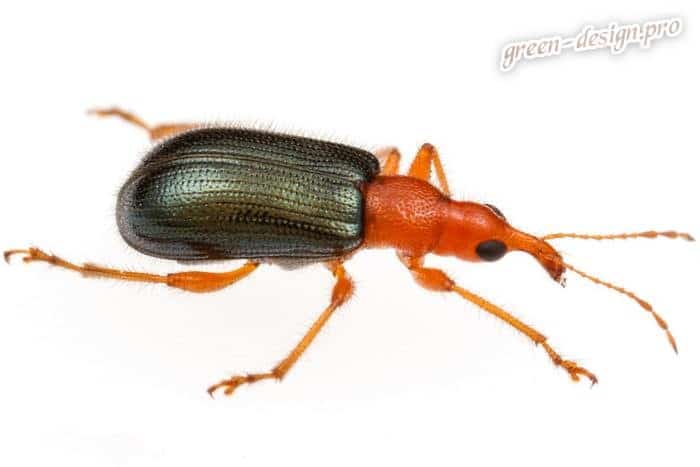

The most famous representative of the family is considered to be a plant pest beetle - goose. An effective fight against parasites consists in the use of Metaphos and Metathion.
Wireworms
Wireworm (Elateridae) or nutcracker is a pest beetle that causes special harm to potatoes, corn, carrots, various types of salads, melon, watermelon.
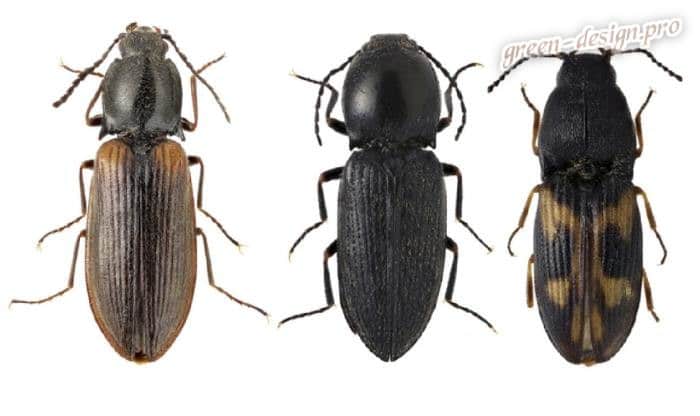

Wireworms gnaw out the tubers of the roots, which significantly weakens the plantings. In addition, clickers are capable of carrying fungal infections. To combat plants, special preparations are used - "Diazinon", "Thunder-2", "Prestige", "Provotox".
Exclamation scoop
It is difficult not to notice a gray butterfly 4 centimeters long, fluttering over the beds in the garden.


In the beds, next to vegetables, she lays very small gray eggs, about 1 mm, from which, two weeks later, yellow or gray-brown larvae hatch, damaging white cabbage, beets, peas, onions and some vegetables.
In June, these larvae pupate and turn into butterflies, which in turn lay new eggs for their army. Over the summer, they are able to destroy almost the entire crop of vegetables. They wait out the winter without any problems in the soil.
To finally expel the exclamation scoop from your garden or garden, you need to spray vegetable plants with a decoction of hot pepper. Pour 500 grams of dry red pepper into 10 liters of water, boil for about an hour.
Before spraying, pour 200 ml of this broth into ten liters of cool water, where also add 40 grams of grated laundry soap. You need to spray the plants every two weeks.
Description and control of beetles - plant pests that eat tree roots
Such parasites are dangerous because it is quite difficult to recognize their presence on plants, since they damage the root system, not the leaves. We suggest considering the most popular representatives.
Medvedki
Bears (Gryllotalpidae) are large brown insects, which are also often called crayfish. The parasites lead an underground lifestyle, and the larvae are also deposited there. Due to the digging of underground tunnels, bears harm the roots by eating them. There are even cases when they can eat even the seedlings of plantations, especially young seedlings.
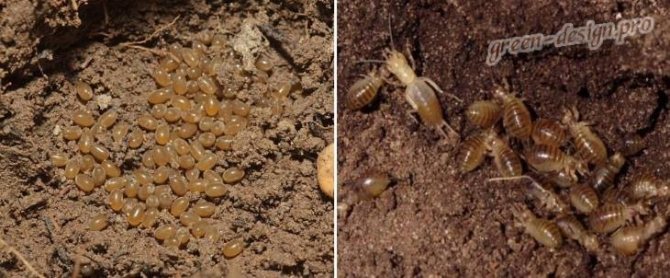

Bear beetle and its offspring
You can fight the bears by placing various traps (containers with honey, beer) on the territory. The tunnels where the crayfish are hiding must be spilled with an infusion of onions or garlic. The use of insecticides - "Medvetoks", "Rembek" or "Antimedvedka" is also practiced. The preparations are laid out in the holes when planting young trees or seedlings.
Beetles or may beetles are plant pests
Beetles (Melolonthinae) are another pest of trees and shrubs that feed on their roots. As a result of the attack of beetles, trees begin to develop worse, and young seedlings may die.
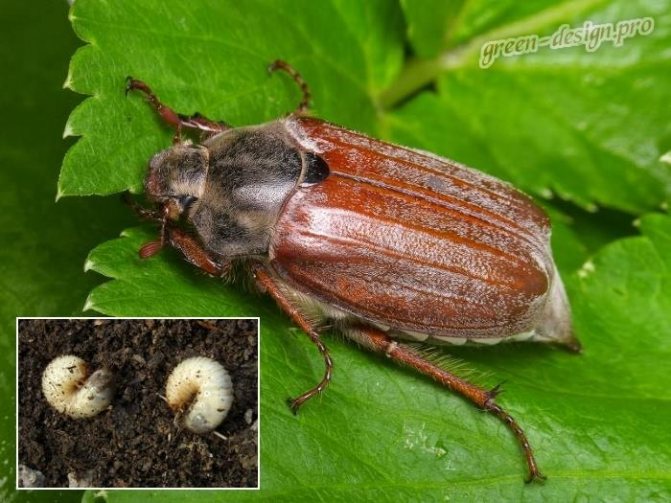

Khrushch or May beetle and its larvae
To deal with beetles, it is best to take an integrated approach. The installation of light traps, deep digging of the soil, where plants can hide, are popular. To treat trees, biological insecticides are used, as well as chemical preparations - "Zemlin", "Antikhrushch", "Bazudin".
Gall nematode
This brown pest lives in the ground and eats the roots of vegetables, especially cucumbers and tomatoes, but they can also be found in bulbous plants.


After that, growths appear on the roots, which prevent the plant from fully developing. Plants affected by a nematode initially lag behind in growth and development, do not bloom, and then die off without producing fruit, since their roots completely rot.
During the summer, three or four generations of nematodes can change, which easily destroy the entire crop. The worms themselves in the roots are very difficult to notice due to their small size, 1.5 millimeters long. The female lays up to 400 eggs at a time in the roots, from which larvae hatch, feeding on plant sap.
To get rid of the rootworm nematode, you need to disinfect all the soil in the beds in late autumn and early spring with the help of poisonous nematicides, since weaker preparations simply do not take them. You can disinfect the soil with hot water, the main thing is that its temperature is about 60 ° C.
Beetles - pests of wood
Representatives that damage the bark of trees are also dangerous. Usually they live inside the trunks, branches, preventing them from fully developing. Consider popular representatives.
Bark beetles
Bark beetles (Scolytinae) are parasites whose life takes place inside trees. Still, as larvae, they carve tunnels under the bark, making real passages from the branches, which leads to their drying out. In addition, if bark beetles are bred on the trees, there is a high probability that other parasites will attack it.
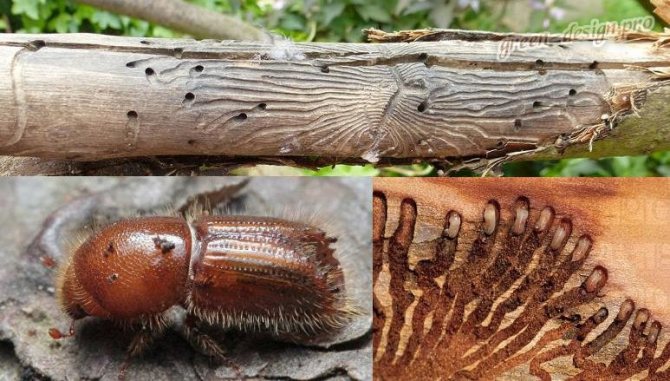

In order to prevent the development of these parasites, it is recommended to promptly remove damaged and dry branches, thin out the plantings. You can use the baits that are laid out on the territory.If preventive measures do not help, then more serious methods of struggle will need to be connected. These include the treatment with drugs "Aktara", "Topaz", "Clipper", "Kartotsid".
Zlatki
Another widespread beetle pest of fruit crops is the goldfish (Buprestidae). Most of the beetles develop on shrub and tree crops. Goldilocks are distinguished by a shiny surface of the elytra, which has various shades.
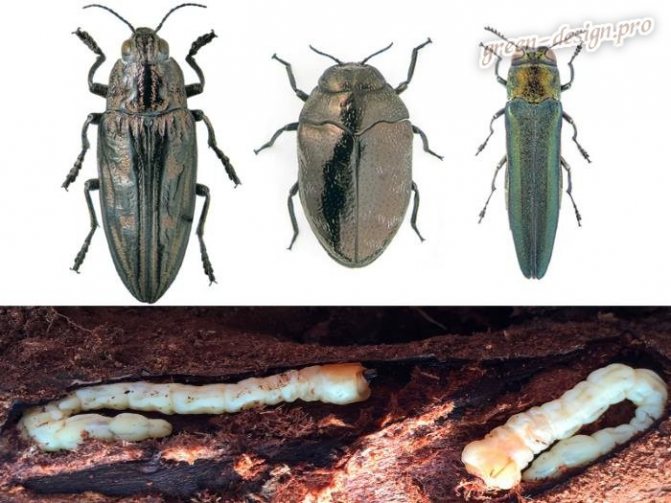

Species of goldsmiths and their larvae
It is a mistake to think that golden beetles feed exclusively on bark. They settle on trees to lay larvae in the bark, and insects can feed on buds, pollen and leaf plates. Depending on the tree on which the parasite settles, even the names of goldsmiths arose - pear, currant, bicolor, grape, smoky.
To fight parasites, spraying with phosphamide or karbofos (0.2% solution) is used. It is recommended to process not only leaves, but also trunks, soil under plantings.
Cabbage bug
In addition to aphids, white cabbage can also be destroyed by a red-black cabbage bug, up to 1 cm in length. However, he is not limited to one cabbage, eating also turnips, radishes and other types of cabbage.


The bug is incredibly fertile, can lay up to 300 eggs at a time, which mature in ten days on the underside of the leaves. Plants can be damaged by both voracious larvae and adult bugs that can fly from one plant to another. They carry over wintering in the soil, under leaves, wood.
To get rid of them, it is enough to spray all the plants with any insecticides once. From folk remedies, you can spread cotton swabs dipped in gasoline around the plants, whose pungent smell the bug does not tolerate. Or plant calendula and tansy next to the beds, which are able to scare off the bug with their aroma.
Beetles pests of flowers
Most flowers are affected by the same insects as other plants. But there are representatives who love this or that culture the most. Here we will get acquainted with them.
Beetles - "firefighters"
"Firefighters" or onion beetles (Lilioceris merdigera) are red beetles, pests of lilies, are the most intrusive. They bite the stems and leaves of plants, they can even completely eat the plant.
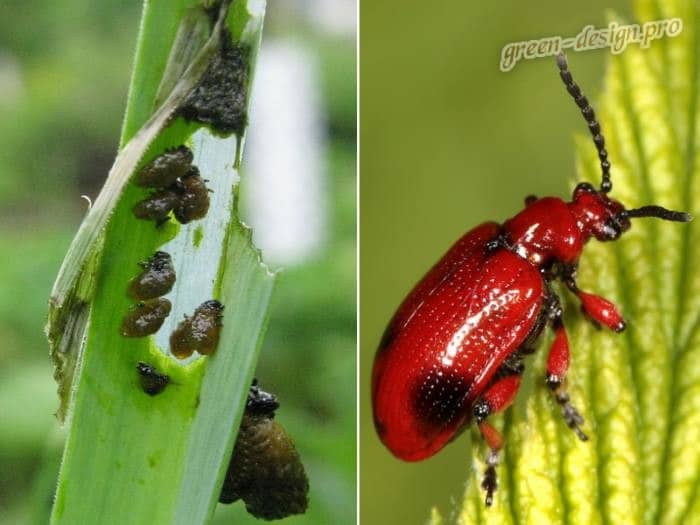

Firefighters and their larvae
The bright red hue of parasites cannot be overlooked, therefore, if a large number of firefighters are found in the garden, it is better to carry out the treatment with the same preparations that are used for leaf beetles. Manual collection may not be effective.
Spider mites
The spider mite (Tetranychidae) is considered one of the most dangerous parasitic insects, since it can damage even indoor flowers - cyclamens, orchids and others.
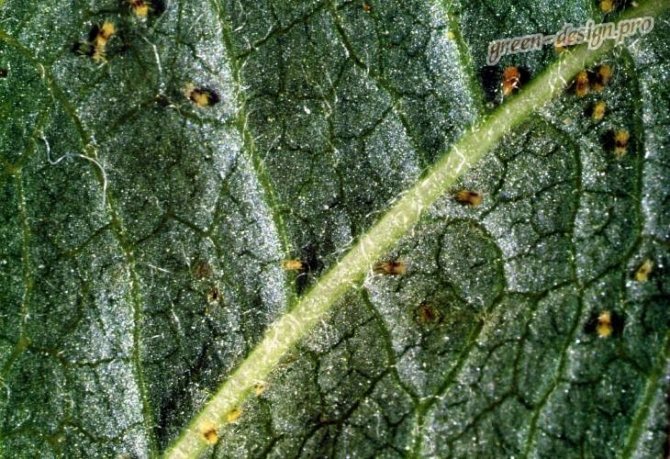

Spider mite on a leaf
In the garden, roses suffer most from spider mites. You can carry out the treatment with a decoction of laundry soap or garlic infusion. If folk methods do not help, then it is better to use insecticides - "Neoron" and "Aktellik".
Having familiarized yourself with beetles, pests of plants, which cause great harm to plantings, you can find an effective way to combat insects. This will quickly get rid of parasites in the area.
Acacia false shield
This yellow-brown insect up to 6 mm long can be found on almost every fruit tree, especially the apple tree. There are usually a lot of them on the branches, since the females are unusually fertile. Already at the beginning of spring, the larvae, even before the buds have blossomed on the tree, are already sucking the sap from the bark of the branches with might and main, thus depriving the tree of its vitality.
Then, after a month and a half, usually in May, they turn into adults, producing a new generation of larvae on the underside of the leaves.The false shield overwinters in the lower side of the branches, and by summer it moves to the upper part of the tree. In two to three years, they are able to bring the tree to complete drying out.
To get rid of the false shield, trees need to be treated with a decoction of mint, which they cannot stand. Boil 300 grams of mint in 2 liters of water for about five minutes, then wait until the broth cools down, then strain.
Next, dilute the broth with 7 liters of cool water and spray the trees with this tincture until there is not a single false shield on them. In severe cases, only chemical insecticides will save.
Dignity
"Terradox" has a number of undoubted advantages:
- Providing a long period of protective action - 2-3 weeks from larvae May beetle, ants and bears, and from onion and cabbage flies and wireworm for the entire growing season;
- Systemic impact on a number of soil insect pests, i.e. there is no need to determine who exactly spoils the crop;
- The drug has a high speed of action - the death of insects occurs within 48 hours after application;
- It is not toxic to the cultivated plants, if the dosages are observed;
- It is not selective; if the processing regulations are observed, cultivated plants show a sufficiently high level of tolerance to the drug.
Onion fly
It looks like an ordinary housefly, but smaller in size, not exceeding 7 mm. The female lays white eggs near bulbous plants or directly on onions. You can get rid of the eggs by just scraping them off the plant with a knife.


It is the larvae that inflict the greatest damage to the plant, eating juicy scales. Pupation occurs in the soil, after which flies appear in July, which, in turn, lay new eggs.
They spoil not only bulbous vegetables, but also flowers. If you skip the appearance of an onion fly, then after a few days not only the crop will be ruined at the root, but the soil will also be unsuitable for the subsequent planting of bulbous plants.
The surest way to get rid of a fly is to plant an onion next to a carrot, whose phytoncides act as a repellant on the onion fly. Or sprinkle a mixture of tobacco dust and ash around the onion every seven days until the onion fly is completely gone. In the fall, the beds must be dug up in order to destroy the wintering pupae.
Soft-skinned or cyclamen mites
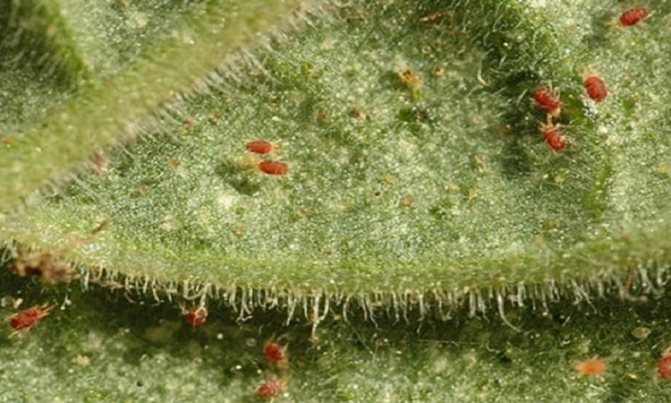

Houseplant pest cyclamen mite
Among the symptoms of the lesion, one can distinguish deformed, shriveled leaves, dried tips on the shoots, as well as falling buds that do not have time to bloom.
The pest appears as a small mite, dislocating massively on the lower surface of the leaf. Outwardly it looks like dust. They reproduce actively in damp and warm conditions.
Control methods: in the case of a strong infection, the plant is completely disposed of, with a slight one, the diseased areas are removed. Processing helps: Karbofos, Decis, Intavir, Fitoverm.
Aphid
Aphids are a small insect of the Hemiptera order of green, black, yellow, pink or brown color. Its size can be up to 4 mm. The body is soft, oval in shape, the limbs are long, but the aphid moves very slowly.
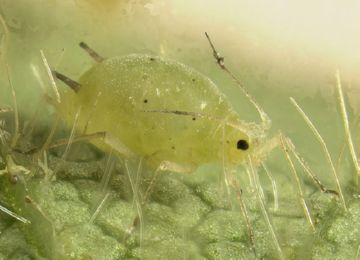

The period of particular activity of aphids is observed in the middle of summer, when wings grow in insects, as a result of which they begin to move much faster. Most of all, aphids prefer young trees, feeding on their leaves, buds and shoots. A tree attacked by aphids cannot develop fully. Its leaves quickly fade and fall, flower buds are delayed in development. As a result, the fruits grow very small and, not having time to ripen to the end, fall. Besides sucking out all the nutrients from the tree, aphids give off a sticky, poisonous liquid, which provides a favorable environment for the emergence of various fungal formations, yeast, viruses. In addition, aphid secretions cover the plants, making it difficult for them to breathe.
Spider mite
This insect damages a huge number of plants, it pierces the tissues with its piercing-sucking mouth and sucks out all its juices, bringing the plant to complete death.


In the garden, it can most often be seen in a greenhouse with cucumbers, since there is a favorable air temperature for the tick. The presence of a tick in them is evidenced by light spots on the leaves and a sharp reduction in the fruiting of the plant. Over the summer, five generations of a tick can change, and they hibernate in the soil, cracks in greenhouses or sheds.
To prevent the appearance of a tick, the greenhouse in the fall after harvest and in the spring before planting must be disinfected with sulfur sticks and cultivated. And spraying plants with Fitoverm will help get rid of ticks.
Earwig - a well-known garden nurse
There is no owner of a summer cottage who does not meet an earwig in the process of caring for the garden. The appearance of this useful insect is quite remarkable, it is distinguished by the presence of sharp mites, with the help of which it grabs and holds its prey. The basis of its menu is made up of: aphids, dahlia wood lice, but, with too abundant settlement, it can harm young plantings of vegetables in the garden.
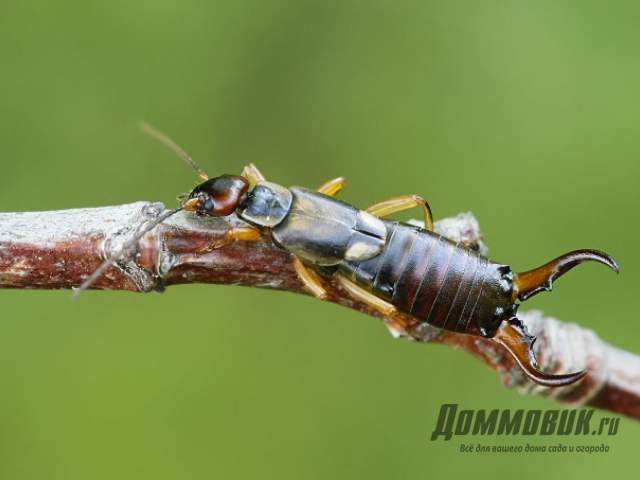

How to deal with the earthen flea in the garden?
When flea beetles appear, the plants are pollinated using sifted wood ash, tobacco dust (in equal proportions) against dew.
Garden, vegetable garden and flower garden tips
Garlic turns yellow: how to water and feed in June?
Top dressing of apple trees in June
How to increase the strawberry harvest tenfold
And one more recipe for an old, undeservedly forgotten means of fighting a wide variety of insects:
- In an enamel or metal container with a capacity of at least 5 liters, boil 1-2 liters of water, dissolve 200 grams of laundry or green soap in it and bring to a boil, then add 200 grams of kerosene.
The mixture is forced to boil two to three times, removed from the heat, when it rises above the level of the pan with foam. The resulting emulsion concentrate is diluted with warm (30-40 °) water to 10 liters.
- But it is more effective: plant repellent plants nearby: catnip, peppermint, wormwood and medicinal, tobacco, tansy, cabbage and leaf lettuce.
